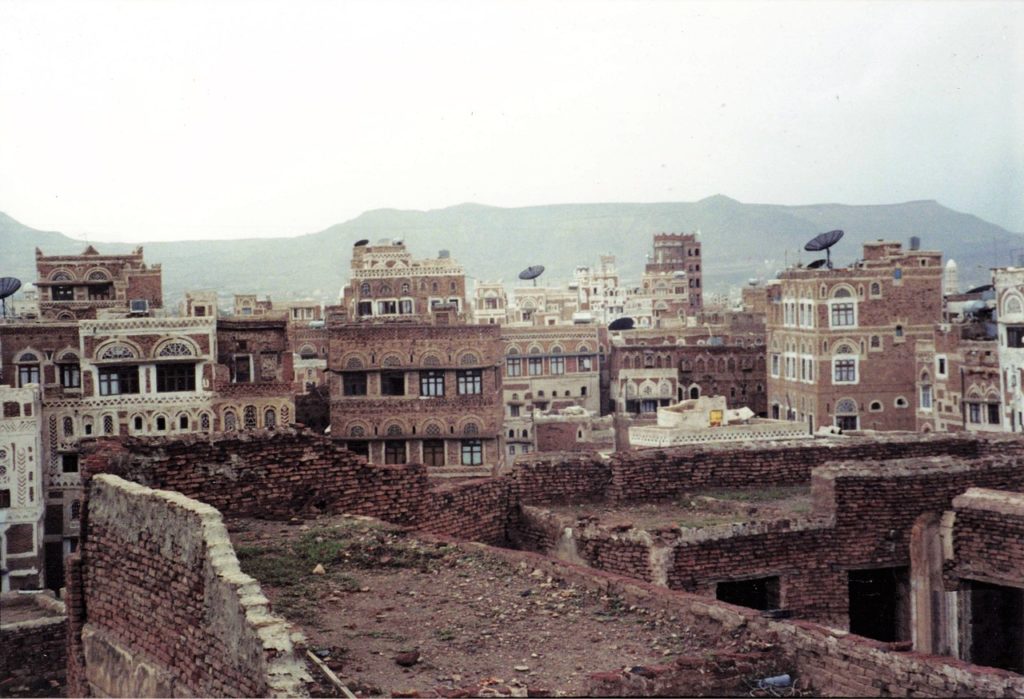By Irina Tsukerman

The recent announcement of an assassination of the commander of the Security Belt forces (in South Yemen), Brigadier General Abdul Latif Al-Sayed, by Al Qaeda in the Arabian Peninsula is yet another reminder that not only have the security and terrorism concerns in South Yemen have not been put to rest, but that growing sectarianism and political battles over the direction and future of this area plays into the hands of the international terrorist organizations. AQAP took credit for the attack, which also killed several other leaders, according to Aden Al Ghad. Yemen security researcher Elisabeth Kendall pointed out that Abdul Latif Al-Sayed had a falling out with Al Qaeda in 2011, and since then had been a repeat target of assassination attempts.
The Security Belt forces are backed by UAE and have earned international renown for their success in clearing out Al Qaeda in the South and for their cooperation with the Western forces on counterterrorism operations. They are loyal to the Southern Transitional Council, which has been making its case for independence to the West amidst uncertainty over Saudi Arabia’s efforts to normalize with the Houthis in the North. Broader contexts include the fact that the Security Belt forces represent AQAP attacks on Southern bases and other targets have been ramping up in the last few years, particularly recently in the midst of the ongoing Security Belt counteroffensive. But the security picture in the South is far more complex than meets the eye, and the stand-off between terrorist groups and their opponents does not fully explain it all.
When Al-Qaeda came to Zinjibar in early 2011, Al-Sayed joined AQAP, as he was close to an AQAP commander in Abyan, named Abu Ali al-Hadrami. During the Battle of Zinjibar, he defected from AQAP, and his militia joined president Hadi’s forces. He came in direct confrontation with al-Hadrami, as he was surrounded in his home village from Al-Hadrami’s forces. Later, when the government launched the 2012 Abyan offensive, he battled his former commander, Abu Hamza al-Zinjibari, AQAP’s Emir of Abyan, after a planned meeting went wrong. During that period, he formed the Popular Committees, numbering about 7,000 fighters, which was backed by Hadi. At that point, he was the de facto ruler of Abyan, as all the Hadi loyal police and soldiers in the province were under his command. AQAP did not take kindly to the betrayal and undertook many attempts to get rid of Al-Sayed. Al-Sayed’s story is not atypical in the region. Before the Arab Spring and the consequent chain of events, sectarian and ideological fluidity among various political parties, factions, movements, and organizations added to the multitude of concerns and tensions, complicating the local dynamic. AQAP is considered one of the most dangerous branches in AL Qaeda, and was formed in 2009 from the merger of the Saudi and Yemeni branches. At its peak, AQAP held the third largest port city in Yemen, before being forced to retreat into the mountains, and also battling it out with its biggest local terrorist rival, ISIS (Islamic State in Yemen/ISY).
Al Qaeda’s gains were biggest in the first years following the Houthi uprising and the outbreak of civil war in Yemen, when it was able to take advantage of the chaotic environment circa 2015-2016. In For a time, AQAP, in part thanks to the conflict with ISY and in large part due to the success of the Security Belt-led operations, was forced to retreat into isolated areas, joined by various anti-Houthi forces. More recent reports from the area show that despite years of having to adopt strategy, AQAP may be resurging. Some recent reports indicate that AQAP and the Ansar Allah, the North Based political movement led by the Iran-linked Al Houthi family and their assorted supporters, may be on the verge of coming to an understanding. Local sources point to increased frequency of prisoner exchanges and apparent willingness to engage in arms trade. Could a rapprochement against the Security Belt Forces be not too far away? If so, it would not be the first time. In 2019, Aden felt the shock of double attacks – first, the AQAP targeting of a military camp, which killed 20 troops, followed by a deadly Houthi assault. The attacks may have been coordinated despite years of lethal rivalry between Al Qaeda and Ansar Allah.
Indeed, AQAP has quite an axe to grind with the UAE-backed military contingency, which has operated in Aden, Lahij, and Abyan, and has fought against Al Islah (the local Muslim Brotherhood party, which has its own forces), Al Qaeda, and ISY. And while the Security Belt has not been specifically focused on the Houthis, the northern Iran-backed militias view the South as a precious prize, and seek to dominate the oil and gas rich territories. The recent confrontations between the Southern forces and the Al Islah and later Saudi-backed militias provided Al Qaeda, which thrives on local opportunism, conflict, and sectarianism, with ample opportunity to expand its base and to retake what was lost. The UAE withdrawal from Yemen came as a shock to KSA; although the Emiratis continued their support for various local forces, they remained relatively quiet since the Saudis announced their efforts to normalize with the Houthis.
The resurgence effort coincides with the chaotic strategy in Yemen, with the US withdrawing most of its support for the Arab Coalition in recent years, and the allies at times appearing to turn on each other over differences in priorities and long term agendas. The Saudis appeared to prioritize vanquishing the Houthis over all else, including sidelining Muslim Brotherhood and its assorted jihadist affiliates.
Nevertheless, they curtailed an offensive on Hodeidah that could have dislodged the Houthis from the control of the strategic port permanently and maintained backchannel diplomacy, which over time appeared to override the commitment to a military victory. UAE and the Southerners, on the other hand, viewed Al Islah, AQAP, and ISY as threats equal to the Houthis, and had at times been accused by the Saudis of aiding and abetting Ansar Allah in an effort to jointly weaken the Muslim Brotherhood affiliates. While these various factions engaged in political, diplomatic, and even military confrontations, Al Qaeda started rebuilding and exploiting the polarization to launch numerous attacks on various Southern targets. The most recent attack is not merely a retaliation and a strategic communication after years of failed assassination efforts, but one in a series of attacks on Southern military units in recent weeks after over a year of increasingly successful and violent reprisals. A long list of preceding attacks showcases AQAP’s military sophistication – significant planning ability, strong organizational skills, ability to take advantage of local conflicts and sectarianism with dexterity, ability to take advantage of the divisions inside Yemen’s legitimate government, ability to resist and maneuver around various internal shifts and restructuring inside the Yemen government, as well as its under its rule, convergence of interests and ability to cooperate with other terrorist organizations, and overall flexibility and resilience. Seeing increasing instability in Yemen as a result of the faltering Saudi-Houthi talks, AQAP was sure to take advantage of the situation to send a message of its presence and also in response to the Southern offensive. In response, the Security Belt forces took control of an Al Qaeda camp in Abyan. But that step is not likely to deter AQAP from further attacks. Unless the
contributing factors that add to Al Qaeda’s success are addressed, the “new and rebuilt” Al Qaeda is likely to take the show on the road – well beyond familiar territories. In the short term, this means more back-and-forth attacks and offensives between the Southern forces and AQAP, which further add to the overall state of chaos in the country. In the long term, we may expect a more durable alliance between AQAP, Al Islah, and the Houthis, perhaps even a temporary truce with ISY, particularly if relations between state stakeholders in Yemen continue to fracture. That could mean that instead of fighting many small isolated terrorist elements, the Security Belt forces could meet with a much stronger, better organized, and united front which shares intelligence, resources, logistics, and may even integrate the command and control structure to some extent. Regardless of that dynamic, Al Qaeda’s resurgence in Southern Yemen could also spell trouble for the rest of the region. While Arab Gulf states are scrambling to finalize their normalization arrangements Iran or are distracted by various local dispute over gas field sharing arrangements, Al Qaeda could be working to make a regional comeback beyond Yemen – ranging from mass terrorist attacks in the nearby Saudi Arabia, to more brazen maritime missions against international vessels operating in the vicinity or even US and other Western military vessels.
Will AQAP bring about a return to its infamous earlier days, such as a new USS Cole? Will we see Iran’s hand in bringing AQAP closer into its own fold as a way of creating plausible deniability over potential increase in regional terrorism, even as its seeks various deals with US and other actors and plays the pragmatic political card in public? Unless we want to find out the answers to these questions in short order, perhaps a return to international cooperation and support for countering extremism in Yemen and assisting the Security Belt forces in counterterrorism operations is long overdue and well justified.
Irina Tsukerman is a fellow at the Arabian Peninsula Institute.



